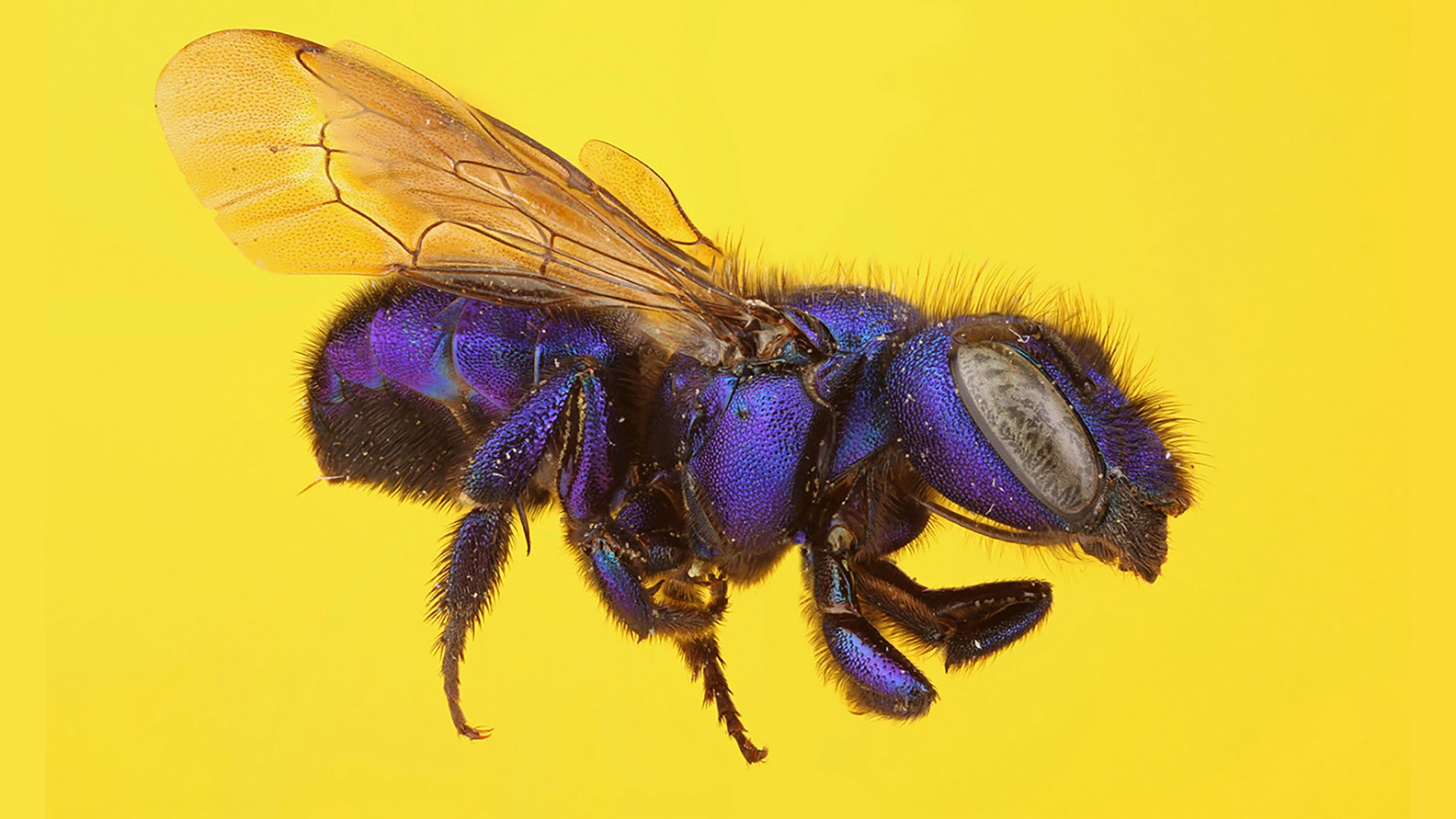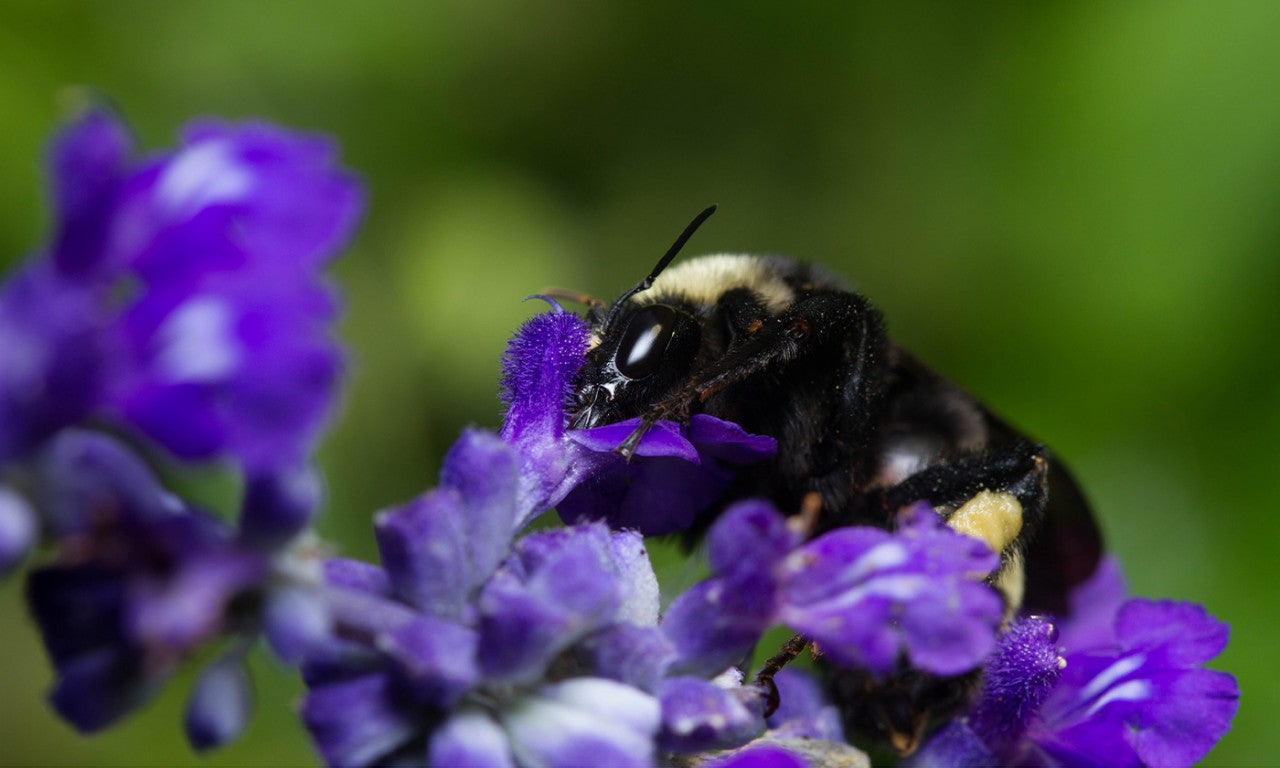Like Their Domestic Cousins, Native Bees are Hurt by Pesticides
Numerous studies have found negative impacts of agrochemicals, such as neonicotinoids, on both honey bees and native bees, and researchers like Felicity Muth and her lab at UT Austin are contributing to this field.

Image of a Mason Bee or Blueberry Bee (Megachilidae, Osmia sp.) by Alejandro Santillana, Insects Unlocked
Because they are critical in maintaining our food supply, a lot of research and public attention has been focused (rightly) on the health of domesticated honey bees. On the other hand, native bees also play critical roles in their environments, including pollinating flowers and agricultural crops. Unfortunately, hundreds of North American native bee species are in decline, due to a variety of factors including loss of habitat, nutritional stress, climate change and exposure to pathogens and agrochemicals.
Despite the great variety of bee species, we know little about how pesticides affect native bee populations.
"There are 20,000 species of bees worldwide, and in North America we have around 4,000 bee species," said Felicity Muth, an assistant professor in UT Austin's Department of Integrative Biology. "Yet, we tend to fixate on the honey bee a lot, because we domesticated it. All the native bees are critical to ecosystem functioning, and they end up exposed to pesticides."
A Toxic Combo
Numerous studies have found negative impacts of agrochemicals, such as neonicotinoids, on both honey bees and native bees. Because crops are most often treated with multiple agrochemicals, bees are exposed to several different chemicals simultaneously. Last month, a Nature article from Harry Siviter, a postdoctoral scholar in Muth's lab found that the interactions between these chemicals significantly increased bee mortality, beyond the levels predicted by adding the negative impact of multiple chemicals together.
"While much of the discussion around neonicotinoids and bees is focused on honey bees, native bees, such as bumblebees and solitary bees, are also important pollinators of agricultural crops and wildflowers," Siviter said.
In fact, a 2013 report in Science found that wild pollinators improved pollination efficiency, increasing the transition from flower to fruit twice as effectively as honey bees.
Many crops, such as tomatoes, eggplants and blueberries, need to be "buzz pollinated" — a process bees use to remove and collect pollen from flowers via vibrations. Muth said honey bees are not capable of buzz pollination, but bumblebees are. Wild bees also provide a free pollination service which acts as a buffer in the face of local honey bee declines.
"People often use the word bee to just mean the honey bees," Muth said. "That's like talking about birds and just meaning chickens. There's this whole amazing diversity right here in Austin — we've got wonderful Longhorn bees, sweat bees, and carpenter bees."

Image of an American bumblebee (Apidae, Bombus pensylvanicus) by Alejandro Santillana, Insects Unlocked
Two Studies on Native Bees
A review article in Ecology Letters this month by Siviter and Muth focused exclusively on the impact of agrochemicals on native bees, specifically bumblebees and mason bees. Neonicotinoids — the most commonly used class of insecticides, which are banned in Europe yet still widely used in the U.S. — have sub-lethal effects on these native bees, impairing their reproductive ability, colony development and foraging performance, the researchers found.
The team used a strategy that allowed for a closer examination of how realistic the conditions for various experiments and research conducted by earlier teams had been.
"We conducted a meta-analysis that combined data taken from 53 papers from the last two decades and confirmed that exposure to neonicotinoids at field-realistic levels has significant sub-lethal impacts on wild bee species," Siviter said.
A third study adds more evidence of the danger these chemicals pose to bees. While still a UT Austin undergraduate, environmental science alum Anthony Johnson also contributed to related research in Muth's bee cognition lab. In a study published this month in Environmental Entomology, he analyzed videos and found that neonicotinoids impair bumblebees' foraging decisions.
Outdated Regulations
Despite the documented consequences of bees' exposure to neonicotinoids, restrictions on these insecticides are rare.
"Importantly, sub-lethal effects on wild bees are seldom considered in agrochemical risk-assessments," Siviter said. "This suggests that the agrochemical regulatory process is currently failing to protect bees from the consequences of pesticide use."
Muth said regulation around pesticides primarily only considers effects on honey bees because they are actively managed to pollinate crops.
"The honey bee is actually weird as bees go," Muth said. "It has really big colonies, whereas most bees are solitary, for example. So, honey bees are not a great model for understanding how pesticides affect bees, because it's probably not representative."
If you want to find out more about the native bees in Texas, the Lady Bird Johnson Wildflower Center provides resources and courses to the public about them.



